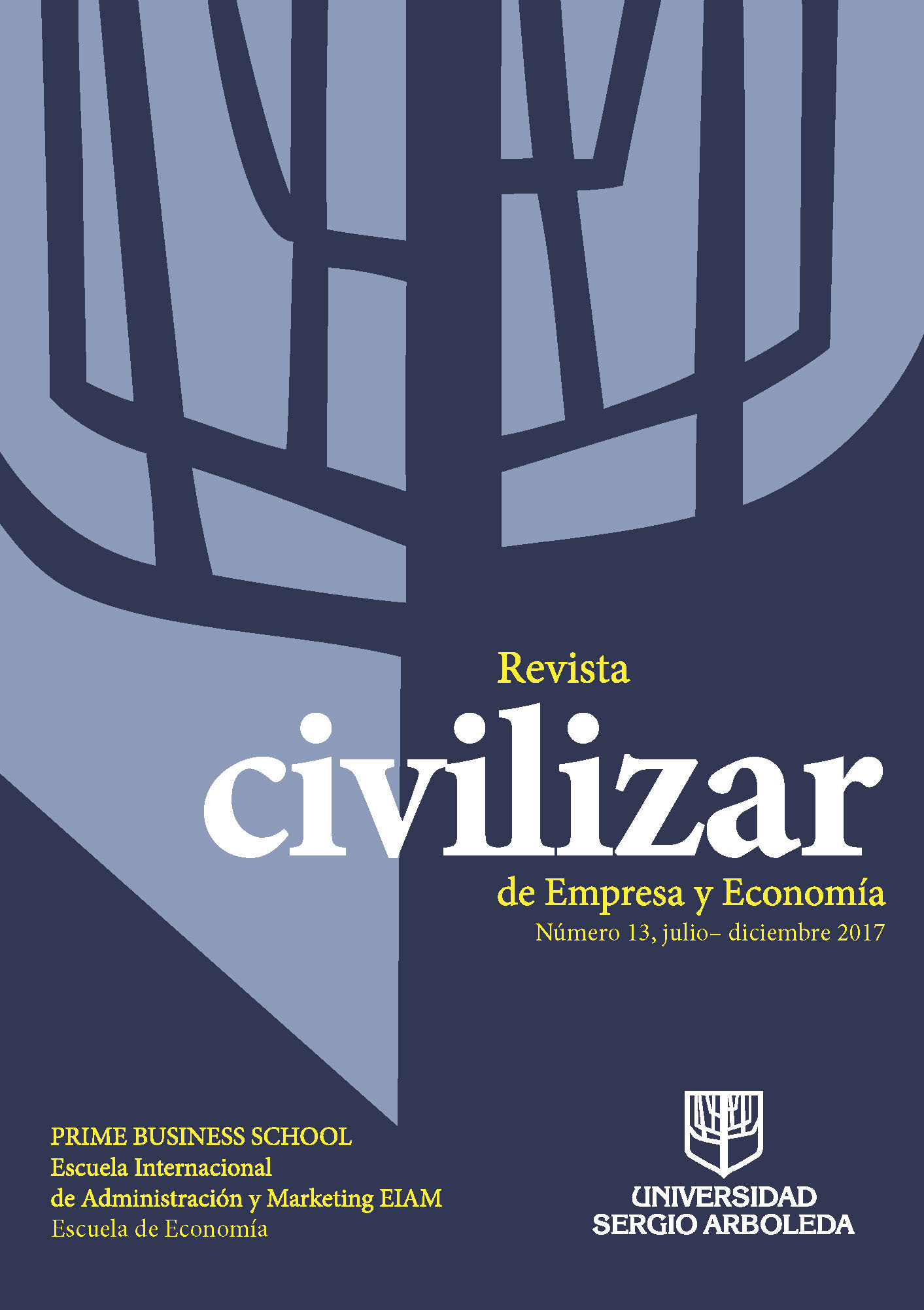Resumen
El presente estudio describe y analiza el desarrollo de vínculos entre deporte, fomento de la integración e inclusión social, e imagen corporativa de la institución policial, en el contexto de eventos deportivos entre policía, fuerzas armadas, instituciones de educación superior, y ciudadanía, durante años recientes en Colombia. Se realizó una investigación de tipo descriptivo con diseño longitudinal, utilizando entrevistas semi-estructuradas y visitas de referenciación, enfocadas en el papel e impacto que la Policía Nacional tiene mediante el uso del deporte como elemento de integración, y considerando la marca e imagen de la Policía. El estudio muestra que la promoción de la práctica deportiva y el establecimiento de alianzas estratégicas entre distintas entidades, son herramientas significativas para fomentar el desarrollo humano y social, para la integración e inclusión, y permiten sugerir acciones para fortalecer la imagen corporativa y el logro de los objetivos institucionales que se persiguen dentro de la realidad nacional actual.
Referencias
in banking sector. Banks and Bank Systems, 7(2), 106-115. Recuperado de https://
businessperspectives.org/journals/banks-and-bank-systems/issue-173/determinants-ofcause-
co-branding-success-a-study-of-consumers-attitudes-in-banking-sector
Alonso-Gonzalez, A., Diaz-Morales, A., & Peris-Ortiz, M. (2016). Enhancement of Entrepreneurship
in Colombian Universities: Competence Approach Plus Personalized Advice (CAPPA)
Model. In Education Tools for Entrepreneurship (pp. 101-112). Springer International
Publishing.
Alonso-Gonzalez, A., Palacios-Chacon, L. A., Rueda-Armengot, C., & Peris-Ortiz, M. (2017).
Collaborative Networks Between Colombian Universities and Population at Risk of Social
Exclusion: The Sergio Arboleda University Experience. In Social Entrepreneurship in Non-
Profit and Profit Sectors (pp. 65-72). Springer International Publishing.
Alonso-Gonzalez, A., Peris-Ortiz, M., & Mauri-Castello, J. (2017). Collaborative Networks Between
Corporate Universities, Customers, and SMEs: Integrating Strategy Towards Value
Creation. In Cooperative and Networking Strategies in Small Business (pp. 197-205). Springer
International Publishing.
Alonso-Gonzalez, A., Plata-Rugeles, D., Peris-Ortiz, M., & Rueda-Armengot, C. (2017).
Entrepreneurial Initiatives in Colombian Universities: The Innovation, Entrepreneurship
and Business Center of Sergio Arboleda University. In Entrepreneurial Universities (pp. 151-
163). Springer International Publishing.
Beck, U. (2007). La mirada cosmopolita o la guerra es la paz. Confines de Relaciones Internacionales
y Ciencia Política. 3(6):115-119.
Cagigal, J. M. (1985). Pedagogía del deporte como educación. Revista de Educación
Consejo de Europa (1992). European Sports Charter, Estrasburgo: Consejo de Europa.
Consejo de la Unión Europea (2013). Educación, juventud, cultura y deporte. Bruselas. Recuperado
de http://www.consilium.europa.eu/uedocs/cms_data/docs/pressdata/en/educ/139721.
Constitución Política de Colombia, (1991). Artículo 52. Constitución Política. Recuperado de http://
www.constitucioncolombia.com/titulo-2/capitulo-2/articulo-52
Física. Renovación de teoría y práctica, nº 3, pp. 5-11.
Díaz, L., Torruco, U., Martínez, M. y Varela, M. (2013). La entrevista, recurso flexible y dinámico.
Investigación en Educación Médica, 2(7), 162-167. Recuperado de http://www.redalyc.
org/pdf/3497/349733228009.pdf
Gutiérrez-Sanmartín, M , Carratalá-Deval, V., Guzmán-Luján, J. F. & Pablos-Abella, C. (2010).
Objetivos y manifestación de valores sociales y personales en el deporte juvenil según
deportistas, padres, entrenadores y gestore. Apunts. Educació Física i Esports, (101), 57.
Health Canada (1998). Improving the Health of Canadians through Active Living, Health Canada,
Ottawa.
Hernández, R., Fernández, C., & Baptista, P. (2014). Metodología de la Investigación (6ª Ed.). México:
McGraw Hill.
Herr, P. M., Farquhar, P. H., & Fazio, R. H. (1996). The impact of dominance and relatedness on brand
extensions. Journal of Consumer Psychology, 5, 135-159. Recuperado de http://faculty.psy.
ohio-state.edu/fazio/fazio/publications.php
Invamer Gallup. (2011). “Encuesta de percepción ciudadana sobre la calidad del servicio de la Policía
Nacional” [base de datos en línea], Bogotá. Recuperado de http://www.invamer.com.co/
[Julio de 2011].
Kovacheva, B. (2017). Inclusión Social. La Unión Europea y el Consejo de Europa. Recuperado de
http://pjp-eu.coe.int/en/web/youth-partnership/social-inclusion
Lalkaka, R. (1999). The Role of Sporting Goods Manufacture in Economic Development.
International Olympic Forum for Development - United Nations Development Programme.
Lopez-Cozar-Navarro, C., Priede-Bergamini, T., y Del Arco-Juan, J. (2015). La empresa social.
Experiencias innovadoras a través del deporte. REVESCO: Revista de estudios cooperativos.
(119):107-131.
Lozano-Mosquera, A., Cardozo-Pizarro, J. M., y Alonso-Gonzalez, A. (2017). Creación de normas
de competencia laboral con la Universidad Sergio Arboleda. Revista Especializada en
Tecnologías Transversales de la Organización. RETO, 4(4), 55-64.
Meizoso, P. & Blanco, M. (2013). El deporte como herramienta de inclusion social. Red nacional
actividad fisica y desarrollo humano - REDAF. 3(58).
Naciones Unidas (2003). Deporte para el desarrollo y la paz hacia el cumplimiento de los objetivos
de desarrollo del milenio. Informe del Grupo de Trabajo Interinstitucional de Naciones
Unidas, pp. 6-26.
Organización Internacional de Policía Criminal. (2013). Se inaugura en Colombia la Asamblea
General de INTERPOL, centrada en el futuro de la actividad policial. Recuperado de http://
www.interpol.int/es/Centro-de-prensa/Noticias/2013/PR130
Pimienta, R. (2000). Encuestas probabilísticas vs. no probabilísticas. Política y Cultura, 13, 263-276.
Recuperado de http://www.redalyc.org/articulo.oa?id=26701313
Salminen, Risto T. (2001) “Success factors of a reference visit – a single case study”, Journal of Business
& Industrial Marketing, 16(6), 487-507. doi: https://doi.org/10.1108/08858620110403086
Snyder, E., & Spreitzer, E. (1978). Social Aspects of Sport. New Jersey, Estados Unidos: Prentice-Hall,
Inc.
Trepat, D. (1995). La educación en valores a través de la iniciación deportiva. La iniciación deportiva
y el deporte escolar, 95-112.
Vallejo, R., y Finol, M. (2009). La triangulación como procedimiento de análisis para investigaciones
educativas. Revista electrónica de humanidades, educación y comunicación social, 7, 117-
133. Recuperado de https://dialnet.unirioja.es/servlet/articulo?codigo=3063110
Vivar, C., McQueen, A., Whyte, D., y Canga, N. (2013). Primeros pasos en la investigación cualitativa:
desarrollo de una propuesta de investigación. Nurse Researcher, 14(3), 60-73. doi: http://
dx.doi.org/10.4321/S1132-12962013000300007

